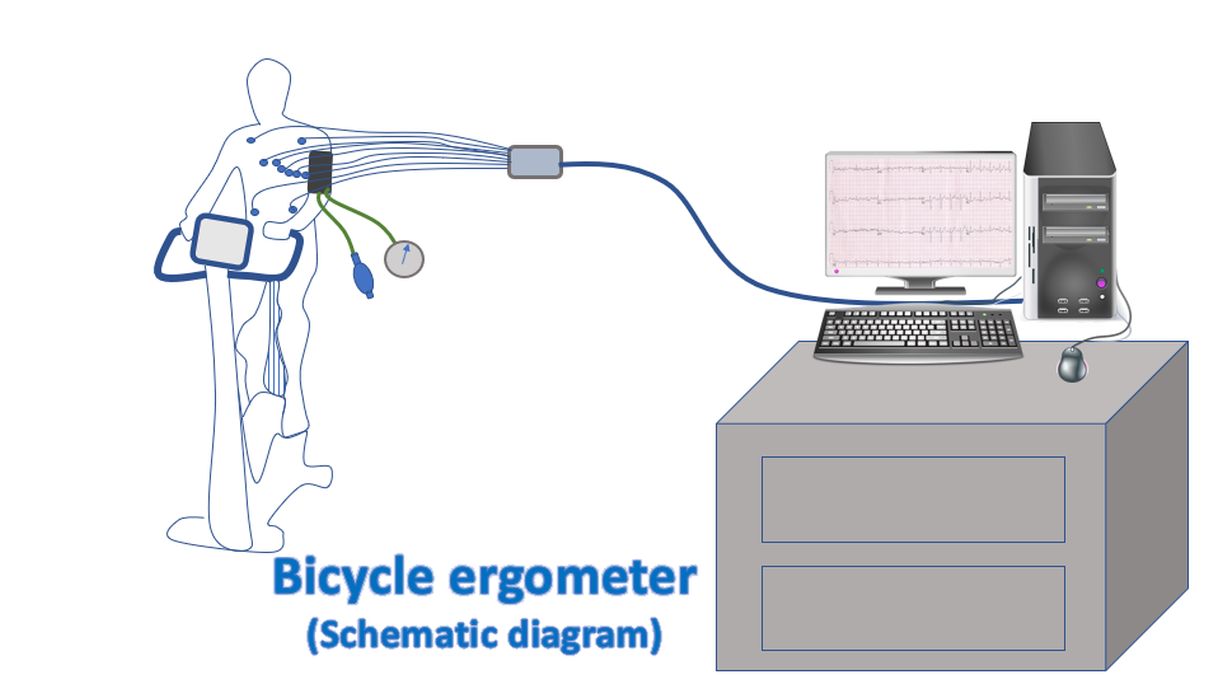Is there any role for exercise in heart failure?
Is there any role for exercise in heart failure?
Generally, everyone would think that heart failure patients need rest rather than exercise. This is true in case of acute decompensated heart failure. But in chronic heart failure, a monitored exercise program is beneficial. This analogous to beta blockers, which we avoid in acute decompensated heart failure, but are beneficial in those with stable heart failure.
Before going into an exercise program in heart failure, first we will check in which situations exercise is better avoided. Those having recent weight gain needs investigation for worsening of heart failure as weight gain could be due to fluid retention. Arrhythmias occurring during exercise, fall in blood pressure with exercise, those with significant aortic stenosis and cases with acute febrile illness are some of the situations in which is exercise program has to be withheld. Just like other exercise programs, always start low and build up gradually. Warming up and cooling down periods are needed for each daily session. It should be a monitored and structured exercise program.
Exercise has multiple roles in case of heart failure. Before the onset of heart failure, it has a role in preventing heart failure, which can be considered as primary prevention. Benefits of exercise programs in those with established stable heart failure can be considered as secondary prevention. Finally exercise testing has a role in prognostication of heart failure. Impairment in exercise tolerance would indicate a poorer prognosis [1].
One of the earliest studies on the role of exercise in heart failure was a small study published in 1988 with just 12 patients with heart failure [2]. They were ambulatory patients with stable symptoms and underwent conditioning by exercise for 4-6 months. Mean training was for 4.1 hours per week, at a heart rate corresponding to 75% of peak oxygen consumption. They underwent maximal bicycle exercise testing with direct measurement of central hemodynamics, blood flow to the legs and metabolic response before and after exercise training. Exercise training reduced resting heart rate and heart rate at submaximal exercise. There was a 23% increase in peak oxygen consumption.

On the other side, in patients with symptomatic chronic heart failure, physical inactivity is associated with higher all-cause and cardiac mortality [3]. There was an additive effect of television screen time of more than 4 hours versus less than 2 hours per day on mortality. But there was no significant difference in heart failure hospitalization. At the same time, even modest exercise of 1 to 89 min/week was associated with survival benefit. They had analyzed the data from Heart Failure Adherence and Retention Trial (HART) which had 902 patients in New York Heart Association class II/III. Both heart failure with preserved ejection fraction and reduced ejection fraction were included in the study. Follow up period was 36 months. Of the 196 inactive patients in the trial 171 were propensity matched with 342 active patients.
2016 European Society of Cardiology Guidelines for the diagnosis and treatment of acute and chronic heart failure has given a class I recommendation for regular aerobic exercise in patients with heart failure to improve functional capacity and symptoms and to reduce the risk of heart failure hospitalization [4].
References
- Cattadori G, Segurini C, Picozzi A, Padeletti L, Anzà C. Exercise and heart failure: an update. ESC Heart Fail. 2018 Apr;5(2):222-232. doi: 10.1002/ehf2.12225. Epub 2017 Dec 13. PMID: 29235244; PMCID: PMC5880674.
- Sullivan MJ, Higginbotham MB, Cobb FR. Exercise training in patients with severe left ventricular dysfunction. Hemodynamic and metabolic effects. Circulation. 1988 Sep;78(3):506-15. doi: 10.1161/01.cir.78.3.506. PMID: 3409495.
- Doukky R, Mangla A, Ibrahim Z, Poulin MF, Avery E, Collado FM, Kaplan J, Richardson D, Powell LH. Impact of Physical Inactivity on Mortality in Patients With Heart Failure. Am J Cardiol. 2016 Apr 1;117(7):1135-43. doi: 10.1016/j.amjcard.2015.12.060. Epub 2016 Jan 18. PMID: 26853954; PMCID: PMC4799780.
- Ponikowski P, Voors AA, Anker SD, Bueno H, Cleland JG, Coats AJ, Falk V, González-Juanatey JR, Harjola VP, Jankowska EA, Jessup M, Linde C, Nihoyannopoulos P, Parissis JT, Pieske B, Riley JP, Rosano GM, Ruilope LM, Ruschitzka F, Rutten FH, van der Meer P; Authors/Task Force Members; Document Reviewers. 2016 ESC Guidelines for the diagnosis and treatment of acute and chronic heart failure: The Task Force for the diagnosis and treatment of acute and chronic heart failure of the European Society of Cardiology (ESC). Developed with the special contribution of the Heart Failure Association (HFA) of the ESC. Eur J Heart Fail. 2016 Aug;18(8):891-975. doi: 10.1002/ejhf.592. Epub 2016 May 20. PMID: 27207191.
